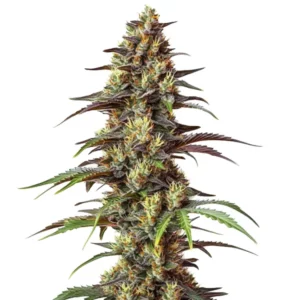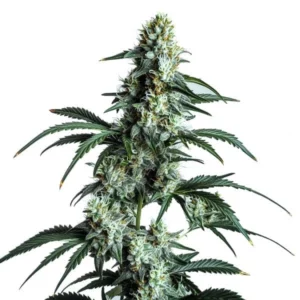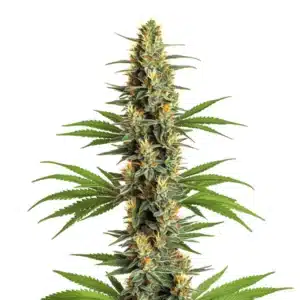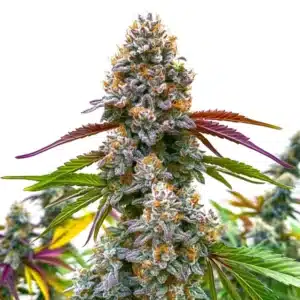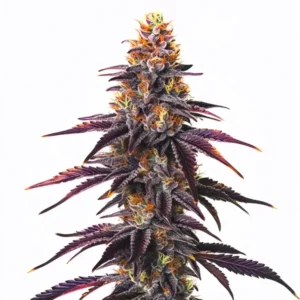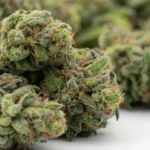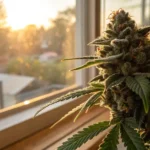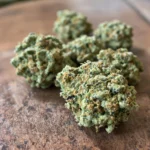
Photoreceptor-Sensitive Cannabis Strains
Photoreceptor-sensitive cannabis strains are a revolutionary way to enhance your growing experience. These strains respond uniquely to light, which directly affects their growth and yield. Whether you’re a beginner or a seasoned grower, knowing how light impacts these strains can significantly boost your results.
Cannabis plants have receptors that respond to different light spectrums. These photoreceptors play an essential role in the plant’s development stages, such as vegetative growth and flowering. By optimizing light conditions, you can maximize the potential of photoreceptor-sensitive cannabis strains.
Recommended Strains
GG4
|
|
THC | 27% (High) |
|
|
Type | Feminized |
|
|
Yield | High |
|
|
Phenotype | 40% Indica / 60% Sativa |
Mamba Negra
|
|
THC | 18% (Medium) |
|
|
Type | Feminized |
|
|
Yield | High |
|
|
Phenotype | 55% Indica / 45% Sativa |
Using the right lighting techniques can mean the difference between a mediocre harvest and a bountiful one. With photoreceptor-sensitive cannabis strains, the manipulation of light becomes a powerful tool. Let’s dive into how these specific strains can be cultivated for higher yields and better potency.
Benefits of Photoreceptor-Sensitive Cannabis Strains
One of the primary benefits of photoreceptor-sensitive cannabis strains is their adaptability to various light conditions. By tweaking the light spectrum, you can encourage faster growth or induce flowering at just the right time. This control allows growers to tailor their cultivation techniques to suit their needs.
Another advantage is the potential for higher yields. Photoreceptor-sensitive cannabis strains, when grown under optimal light conditions, can produce more buds. This increased yield doesn’t just mean more cannabis; it often translates to higher quality, more potent product.
These strains are particularly advantageous for indoor growers who have complete control over their growing environment. By employing precise light spectrum adjustments, they can simulate ideal outdoor conditions, boosting plant health and productivity. Additionally, the ability to control light exposure means these strains can be grown year-round, offering a continuous harvest cycle.
Furthermore, photoreceptor-sensitive cannabis strains are known for their resilience under fluctuating environmental conditions. Their ability to adapt to changing light levels makes them less susceptible to stress, leading to more robust plants. This adaptability is one of the key benefits of photoreceptor-sensitive cannabis strains, making them a popular choice among cultivators looking for consistent success.
Light Spectrum Effects on Photoreceptor-Sensitive Cannabis
The light spectrum plays a crucial role in plant growth. Blue light encourages vegetative growth, while red light promotes flowering. By adjusting these light spectrums, growers can influence the plant’s life cycle. Photoreceptor-sensitive cannabis strains respond particularly well to these changes.
Real-life examples show that using LED lights that allow spectrum adjustment can significantly enhance the growth of these strains. For instance, during the vegetative stage, increasing the blue light can result in bushier plants, which ultimately leads to more buds during flowering.
Besides to blue and red lights, other spectrums, such as far-red and UV, also play a significant role in cannabis growth. Far-red light can extend the photoperiod, encouraging faster growth, while UV light has been shown to increase resin production, enhancing the potency of photoreceptor-sensitive cannabis strains. Adjusting these spectrums can lead to a more balanced growth cycle, maximizing yield and quality.
Knowing the light spectrum effects on photoreceptor-sensitive cannabis is crucial for maximizing yields. By meticulously controlling the light environment, growers can replicate the plant’s natural preferences, leading to healthier plants and more productive harvests. This precise manipulation of light is at the heart of successful photoreceptor-sensitive cannabis cultivation techniques.
Promos & Deals
Optimizing Cannabis Growth with Photoreceptor Sensitivity
Optimizing growth involves more than just lighting. It’s about creating an environment where photoreceptor-sensitive cannabis strains can thrive. This includes considering factors such as temperature, humidity, and nutrient availability.
Implementing a controlled environment where light cycles are precisely managed can lead to better outcomes. For instance, some growers use automated systems to adjust lighting schedules, ensuring that their photoreceptor-sensitive cannabis strains receive the ideal amount of light at each growth stage.
Beyond light, growers should pay attention to air circulation and CO2 levels, which can significantly impact growth rates and yield. Proper ventilation systems ensure that plants receive adequate carbon dioxide, which is crucial for photosynthesis. Integrating these elements with light management techniques enhances the overall growth environment, optimizing cannabis growth with photoreceptor sensitivity.
Furthermore, maintaining consistent nutrient delivery tailored to each growth stage complements the light management strategy. Nutrient schedules should be adjusted based on the plant’s developmental phase, ensuring that photoreceptor-sensitive cannabis strains have access to all the essential elements needed for vigorous growth and abundant yields.

Photoreceptor-Sensitive Cannabis Cultivation Techniques
Successful cultivation techniques often involve a combination of precise lighting and environmental control. For photoreceptor-sensitive cannabis strains, it’s crucial to maintain a stable environment that supports their unique light needs.
One effective method is using light meters to monitor the intensity and spectrum of light your plants receive. This data can help you make informed decisions on when to switch from vegetative to flowering stages, optimizing the growth cycle.
Incorporating reflective materials in grow spaces can enhance light exposure, ensuring that all parts of the plant receive adequate light. Reflective surfaces help distribute light evenly, minimizing shadow areas and promoting uniform growth across photoreceptor-sensitive cannabis strains. This technique is especially beneficial in maximizing light efficiency in indoor setups.
Employing advanced photoreceptor-sensitive cannabis cultivation techniques, such as training methods like topping and low-stress training (LST), can further boost yields. These techniques involve manipulating plant growth patterns to optimize light exposure and create a more favorable canopy structure, which can lead to more robust and productive plants.
Photoreceptor-Sensitive Cannabis Strains for Higher Yields
Higher yields are often the primary goal for cannabis growers. Photoreceptor-sensitive cannabis strains offer a pathway to achieve this goal through tailored light management. By knowing the plant’s response to different spectrums, growers can maximize their harvest.
Strains such as GG4 have been cultivated with impressive results under optimized lighting conditions. The ability to fine-tune light exposure means that plants can produce more buds, leading to a higher overall yield without compromising quality.
Achieving higher yields with photoreceptor-sensitive cannabis strains involves a strategic approach to every aspect of cultivation. This includes selecting the right strain, setting up optimal growing conditions, and continuously monitoring plant responses. By adapting practices to suit the unique requirements of these strains, growers can significantly enhance their production levels.
Moreover, these strains are known for their efficiency in resource utilization. By effectively managing light and environmental factors, growers can achieve substantial yields while minimizing waste and energy consumption. This efficiency underscores the value of photoreceptor-sensitive cannabis strains for higher yields in commercial and personal cultivation setups alike.
Real-World Examples of Successful Cultivation
Many growers have shared their success stories of cultivating photoreceptor-sensitive cannabis strains. For instance, using a combination of red and blue LEDs has led to healthier plants with increased bud production.
One grower reported that by implementing a lighting schedule that mimics natural daylight patterns, their Mamba Negra plants showed increased resin production. This not only improved the yield but also the potency of the final product.
Another notable example comes from a community of growers who utilized photoreceptor-sensitive cannabis cultivation techniques to achieve unprecedented results. By experimenting with various light spectrums and environmental settings, they were able to fine-tune the growth conditions for each strain, resulting in a marked increase in both yield and quality.
These real-world experiences highlight the transformative potential of photoreceptor-sensitive cannabis strains when cultivated under the right conditions. Growers who invest in knowing and applying these techniques are often rewarded with exceptional harvests, showcasing the practical benefits of optimizing cannabis growth with photoreceptor sensitivity.
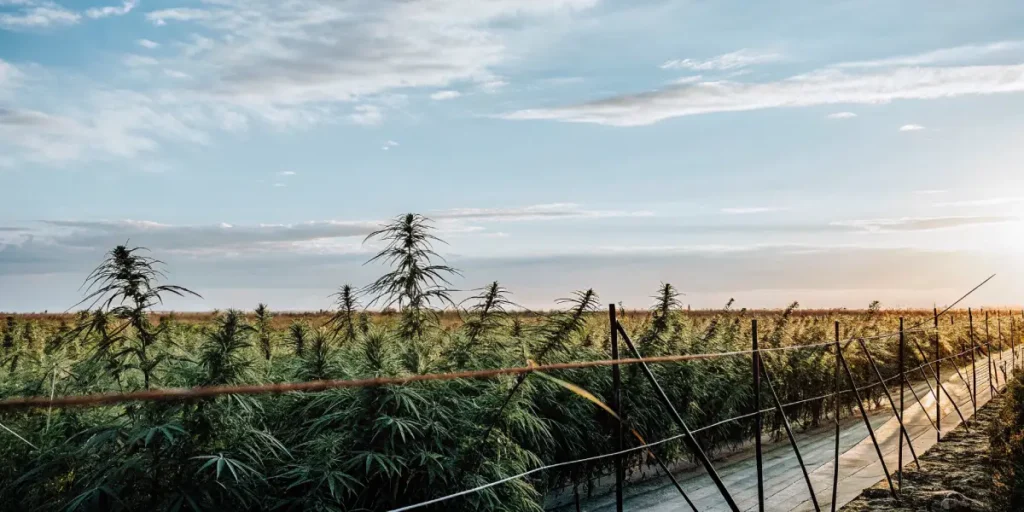
FAQ Section
What are photoreceptor-sensitive cannabis strains?
Photoreceptor-sensitive cannabis strains are types of cannabis that respond specifically to changes in light. These strains have specialized receptors that detect different light spectrums, allowing growers to manipulate growth phases effectively.
By optimizing light exposure, these strains can achieve faster growth and higher yields. Knowing how to use light to influence these plants can lead to more efficient and successful cultivation.
These strains are particularly valuable for growers looking to maximize their production potential. By integrating advanced lighting systems that offer spectrum flexibility, cultivators can fine-tune the growing environment to suit the specific needs of photoreceptor-sensitive cannabis strains, ensuring robust growth and bountiful harvests.
Additionally, the knowledge gained from growing these strains can be applied to other types of plants, broadening a grower’s expertise. This adaptability makes photoreceptor-sensitive cannabis strains an excellent choice for those seeking to expand their cultivation skills and achieve consistently high-quality results.
How do light spectrum effects impact cannabis growth?
Light spectrum effects can significantly impact cannabis growth by influencing different growth stages. Blue light is known to promote vegetative growth, while red light encourages flowering. Adjusting these spectrums can result in healthier, more productive plants.
For photoreceptor-sensitive cannabis strains, using the right light spectrum at the right time can enhance their natural growth patterns, leading to better yields and increased potency.
Moreover, the strategic use of light spectrums can help mitigate potential growth challenges, such as elongation or stunted growth. By carefully balancing the spectrum, growers can ensure that photoreceptor-sensitive cannabis strains remain healthy and vigorous throughout their lifecycle, optimizing cannabis growth with photoreceptor sensitivity.
Furthermore, light spectrum effects are not limited to growth alone; they also play a role in the plant’s chemical makeup. By adjusting spectrums, growers can influence the production of cannabinoids and terpenes, tailoring the plant’s effects and aromas to specific preferences and market demands.
Can first-time growers successfully cultivate these strains?
Yes, first-time growers can successfully cultivate photoreceptor-sensitive cannabis strains with the right knowledge and tools. It’s important to understand how light affects these plants and to invest in good quality lighting systems that allow spectrum adjustments.
By following simple guidelines and learning from experienced growers, beginners can achieve impressive results. Starting with strains known for their adaptability, like those from Blimburn Seeds, can also be beneficial.
First-time growers are encouraged to start with a small setup to familiarize themselves with the nuances of photoreceptor-sensitive cannabis cultivation techniques. As they gain confidence and experience, they can expand their operations, incorporating more advanced methods and technologies to enhance their growing skills.
Additionally, many online communities and resources provide valuable insights and support for novice growers. Engaging with these platforms can offer practical advice, troubleshooting tips, and encouragement, helping new growers navigate the challenges of cultivating photoreceptor-sensitive cannabis strains successfully.
What are the best strains for photoreceptor-sensitive cultivation?
Some of the best strains for photoreceptor-sensitive cultivation include Critical Daddy Purple, Mamba Negra, and GG4 from Blimburn Seeds. These strains have shown excellent responsiveness to light spectrum adjustments, making them ideal for both novice and seasoned growers.
By choosing strains that are known for their adaptability to different light conditions, growers can make the most of their cultivation efforts and enjoy higher yields and better quality cannabis.
These strains not only offer impressive yields but also deliver unique flavors and effects, appealing to a wide range of preferences. Their adaptability to various growing conditions further enhances their suitability for photoreceptor-sensitive cannabis cultivation, making them a popular choice among growers seeking both quality and quantity.
Moreover, these strains are often bred for resistance to common pests and diseases, providing an added layer of security for growers. This resilience, combined with their responsiveness to light adjustments, makes them a reliable option for achieving successful harvests in diverse environments.
How can growers optimize cannabis growth with photoreceptor sensitivity?
Growers can optimize cannabis growth by carefully managing light exposure and maintaining a stable growing environment. Using tools like light meters to measure and adjust light intensity and spectrum can lead to better growth outcomes.
Implementing automated systems to control light cycles and monitoring plant responses to different spectrums are practical techniques that can enhance the cultivation process and improve overall yields.
Besides to light management, maintaining optimal soil or hydroponic conditions is crucial for maximizing the potential of photoreceptor-sensitive cannabis strains. Proper nutrient management, pH balance, and moisture levels all contribute to a thriving growth environment, supporting the plant’s response to tailored light exposure.
Continuous learning and adaptation are key components of successful cultivation. By staying informed about the latest advancements in photoreceptor-sensitive cannabis cultivation techniques, growers can refine their practices and achieve outstanding results, pushing the boundaries of traditional cannabis growing methods.




